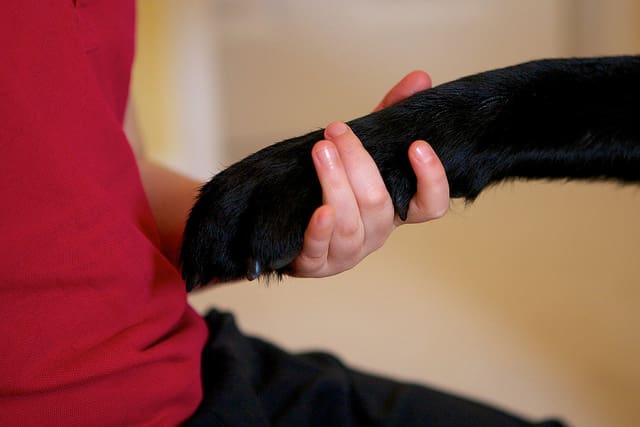
Iris Smolkovic is Dogs for Good’s Development Officer, she is experienced in practicing animal assistance intervention techniques and is part of our Community Dog team. Here she explores the importance of dogs being able to read emotions in light of new research.
We all believe dogs are human’s best friends. Friends are those who never hesitate to help and support us either practically or emotionally. An example of practical support is how our assistance dogs provide for the people they help by picking dropped items up, filling and emptying the washing machine, opening and closing doors etc. This one is quite obvious, but what about the emotional side? To provide emotional support one has to be able to read others’ emotions and respond accordingly.
Every dog owner has surely experienced their dog’s reaction to being upset, down or crying. They provide comfort in the best way they know, either with initiating close contact by snuggling up to us, bringing a toy for us to throw or play tug-of-war and desperately trying to make us smile. This ability makes them invaluable also for the activity and therapy work settings in the communities. And dogs are the happiest when they see we are happy too.
Sharing happiness, either on long walks, playing games or just cuddling in front of the fireplace, is for sure a dog’s favourite thing to do. We are sure that there are as many anecdotes of dogs providing emotional support as there are dog owners.
Recently, this ability of dogs to read human emotions has even been proven scientifically by researchers at the Universities of Lincoln and Sao Paulo. The University of Lincoln also worked with Dogs for Good to investigate the benefits that pet dogs bring to families with autism.
Just like true friends, dogs never fail to provide us with their unconditional love and companionship. And thus, they make excellent assistance, community or pet dogs. All are indispensable to the people whose lives they touch.